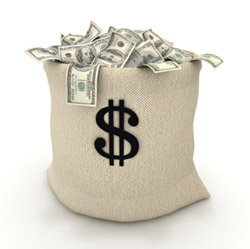Revolving Debt as a Flexible Borrowing Solution
Revolving debt is financing offered to corporations, small businesses, and individual borrowers. The outstanding balance changes on a monthly basis as people charge purchases. It is up to the cardholder to decide how much to borrow, but there is a specified upper limit. The credit limit depends on different factors, including cash flow, payment history, credit score, income, and debt-to-income ratio, among others. When the balance exceeds the limit, the borrower’s credit score may suffer. This shows lenders that the holder is a risky borrower. To help customers to avoid such situations, some issuers feature mobile and online reminders.
Main Types

Revolving debt comes in different types, including lines of credit and credit cards. The first is a type of debt instrument that is offered to institutions, businesses, governments, and individuals. There are two types – LOC and HELOC. Lines of credit come with a maximum balance that borrowers are allowed to maintain. Bank customers can withdraw money whenever they need it as long as the amount is within the maximum specified in the agreement. Some types of LOCs are considered demand loans meaning that the outstanding balance can be recalled at any time. Borrowers are given a 24-hour notice, and prepayment penalties are not assessed. This type of loan is also known as money on call and is offered to creditworthy customers that have a long-standing relationship with the financial institution.
Borrowers can choose from two types of LOCs – business and personal lines of credit. The first variety is used by companies that need money to increase their seasonal cash flows. Lacking sufficient funds, businesses are often forced to cut costs for materials and training, which may affect the quality of goods and services offered. Companies also use the funds to purchase inventory and equipment. New ventures and start-ups are usually required to offer collateral or guarantee of repayment. Banks request financial documents such as certified financial statements and others. There are also standby credit lines that serve as performance bonds. In this case, companies seek guarantees that they can pay to a customer. The agreement terminates with the final payment or at the maturity date.
Personal lines of credit are used to pay college tuition, medical bills, large purchases, home renovation projects, and to consolidate bills. Applicants should have a steady source of income and good credit history. Clients who offer collateral can borrow up to $250,000. Unsecured lines of credit come with a limit of 5,000 to $100,000. Home equity lines of credit are another variety whereby the home of the borrower is used as collateral. HELOCs come with a low rate of interest and long terms of up to 10 years. The repayment method depends on the financial institution – payments may go toward the principal balance and interest or the borrower may pay the outstanding balance in installments.
Credit cards are also revolving debt and come in different varieties, including secured and prepaid cards. They are usually offered to applicants who seek to rebuild or build their credit history. Trustworthy customers with a stable income and solid payment history can choose from a large variety of cards, including low interest and airmiles credit cards. Some products come without cash advance fees and annual fees.
One advantage of revolving debt is that borrowers can use the money to pay for small and large purchases, from a lottery ticket and chewing gum to household equipment. It is a good solution for employees with irregular paychecks and those who rely on sales commissions. They can purchase on credit and pay the outstanding balance when they have a large commission or a few big sales. Revolving debt has some disadvantages as well. One is that the financial institution can change the rate of interest and credit limit at any time. This is the case with missed and late payments. Borrowers who miss payments are perceived as high risk, and the bank may increase the rate (or lower the credit limit).
Related Articles
Revolving Credit for Daily Expenses and Major Purchases
Revolving credit is an agreement between a company or an individual borrower and a financial institution, which offers funds on demand. Borrowers can draw on the line whenever they need funds but are under no obligation to use the money. There are different types of revolving debt such as credit...
Credit Cards for Individuals and Businesses
Credit cards are issued by a variety of financial institutions, including financial companies, caisses populaires, banks, and others. This is a form of revolving debt that is used for the purchase of services and goods. The payments are collected by issuers at a later date. There is an...
Consumer Debt - Secured and Unsecured Types
Consumer debt is money owed as a result of buying services and goods. These items don’t bring profit and are consumed. Unlike mortgages, the interest payments on consumer debt are not tax-deductible. Consumer debt allows borrowers to pay their ongoing expenses (rent, phone and electricity bills),...
